Our star–the sun–is made up of a bubbling, boiling substance called plasma. The sun constantly belches out great clouds of hot plasma. Plasma is a gas that is charged up with electricity. It travels at astounding speeds, and sometimes, it collides with Earth!
Thank goodness Earth’s magnetic field and atmosphere protect us from most of this blast. Otherwise, the sun’s weather would be our weather. However, we are still affected by the sun’s atmosphere and its violent activities. We call this part of our weather space weather, because it comes to us through space from the sun.
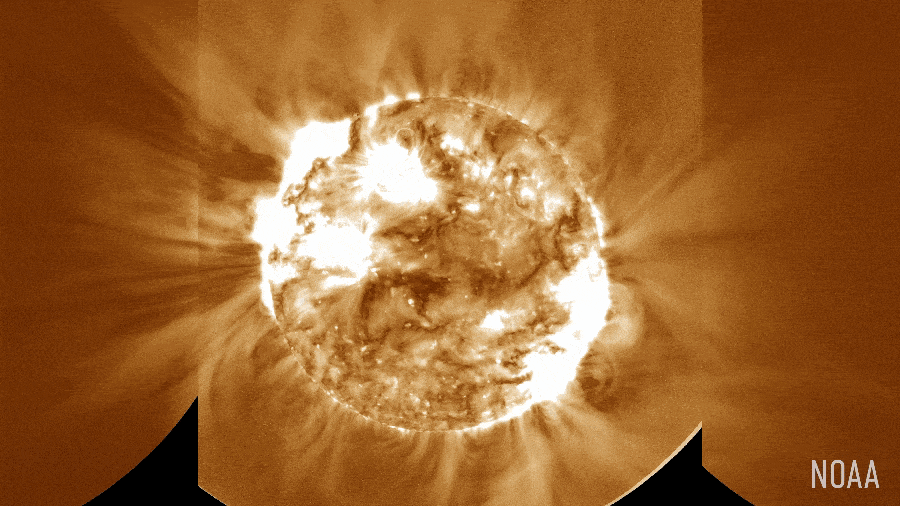
This animation of the sun was captured by the Solar Ultraviolet Imager (SUVI) instrument aboard the GOES-18 (GOES-West) weather satellite. Image credit: NOAA
How Fast is a Solar Wind?
Solar wind blows at about 600,000 to 2,000,000 miles per hour. That’s two million miles per hour! The solar wind flows around obstacles, such as planets and moons.
However, if a planet has a magnetic field, as Earth does, the charged particles flow around the magnetic field. The solar wind pushes on the magnetic field, flattening it on the side facing the sun, and pushing it out into a long tail on the opposite side.
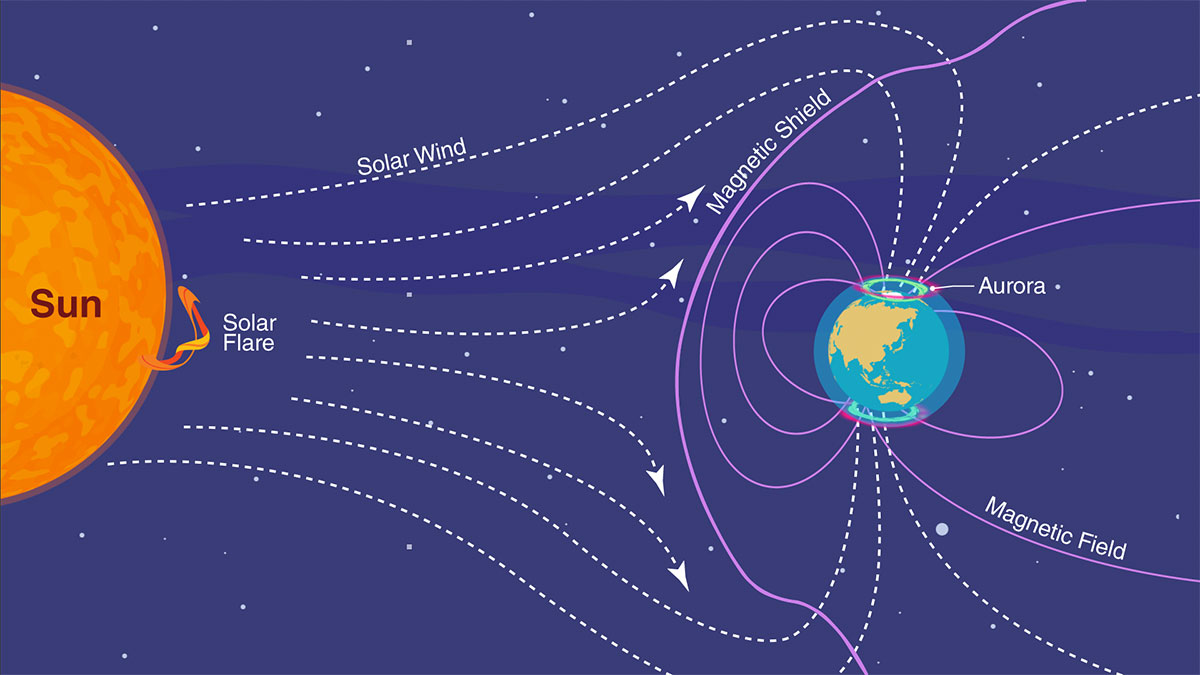
A diagram of how the solar wind interactions with Earth’s magnetic field and atmosphere to create space weather, such as auroras. Image credit: NOAA/JPL-Caltech
You can’t see Earth’s magnetic lines of force. But if you have ever used a compass to find which way is north, you have seen one effect of these lines of force. The compass needle lines up right alongside the lines of force, which come out of the Earth’s magnetic South Pole and enter Earth’s magnetic North Pole.
Auroras – Where Space Weather is Beautiful
The charged particles of the solar wind follow the magnetic lines of force. Some of these charged particles flow into Earth’s atmosphere near the Poles. When these charged particles interact with the gases in Earth’s atmosphere, they glow in beautiful shades of green and red.
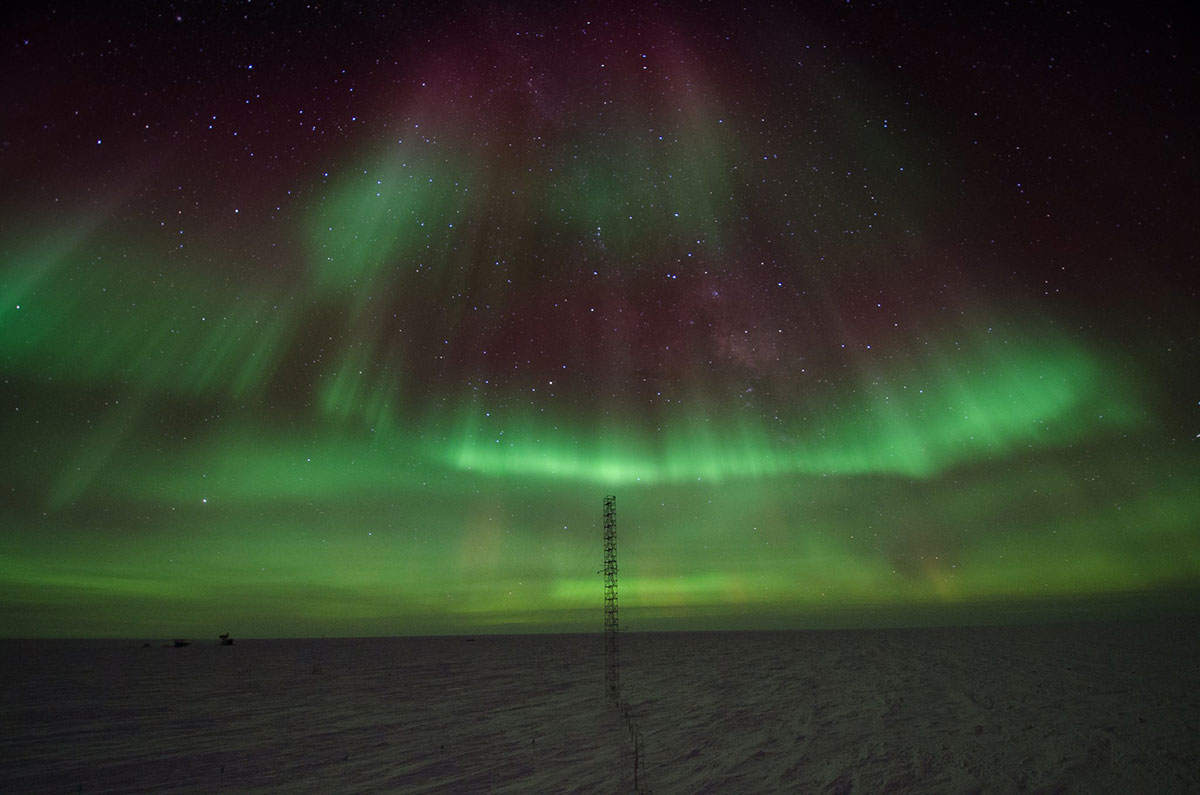
Aurora australis, or Southern Lights, dancing over a meteorological tower at South Pole Station. Image credit: Ross Burgener, ET, NOAA/OAR/ESRL/GMD
We call these glowing colors the Northern Lights and Southern Lights, or the Aurora Borealis and Aurora Australis. They are beautiful curtains of light that move and sway in the night sky. Usually, you can see them only if you live somewhat close to the North or South Pole, far from the equator. Sometimes you can see the auroras far from the North or South Poles.
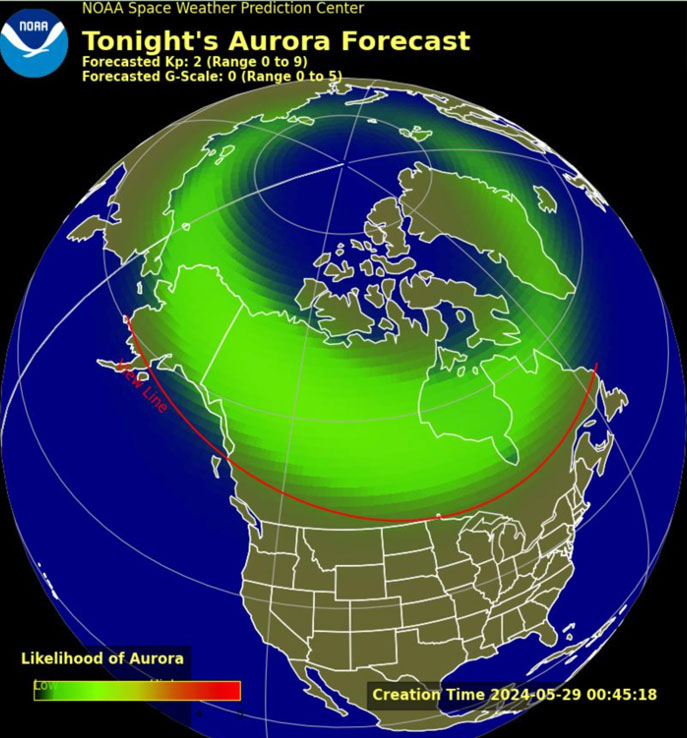
Curious if you'll be able to see auroras tonight in your neighborhood? You can see a map of where auroras are expected to be viewable in North America using the Aurora Viewline tool from the National Space Weather Prediction Center! Credit: NOAA
Solar Flares and Coronal Mass Ejections
But sometimes the sun has an even bigger event. These sudden and intense activities are called solar flares and coronal mass ejections (CMEs). The effects of these types of space weather are not so pretty! As a matter of fact, they can be very bad for humans and their equipment.
A solar flare happens when the sun suddenly releases out a blast of extra energy. Some of this energy is very intense energy called X-rays. CMEs are even bigger; in fact, they are the biggest explosions in the solar system.
When all these X-rays and charged particles reach Earth, they can cause trouble.
How Can Bad Space Weather Affect Us on Earth?
Bad space weather can interrupt radio signals. It can damage satellites. Ships at sea might not be able to use navigation equipment that relies on satellites. Also, their two-way radios might not work. They could get lost or run aground in shallow water.
Electrical systems that bring power to our homes and business can be knocked out by this bad space weather, too.
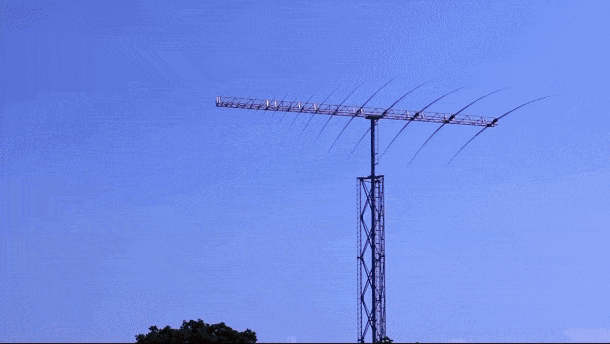
Bad space weather can affect electricity, communications and other infrastructure that we rely on in our daily life. Image credit: NOAA
And what about the astronauts living in the International Space Station? The Space Station has radiation shielding built in. But the astronauts certainly would not go out on a space walk during bad space weather. The extra radiation could make them sick.
Even airplane crew members can be affected if they often fly over the North Pole. More radiation from space weather events comes down into the atmosphere near the poles.
Detecting Space Weather
Just as we need early warnings about hurricanes, tornadoes, and other bad weather, having early warnings of bad space weather helps keep damage to a minimum.
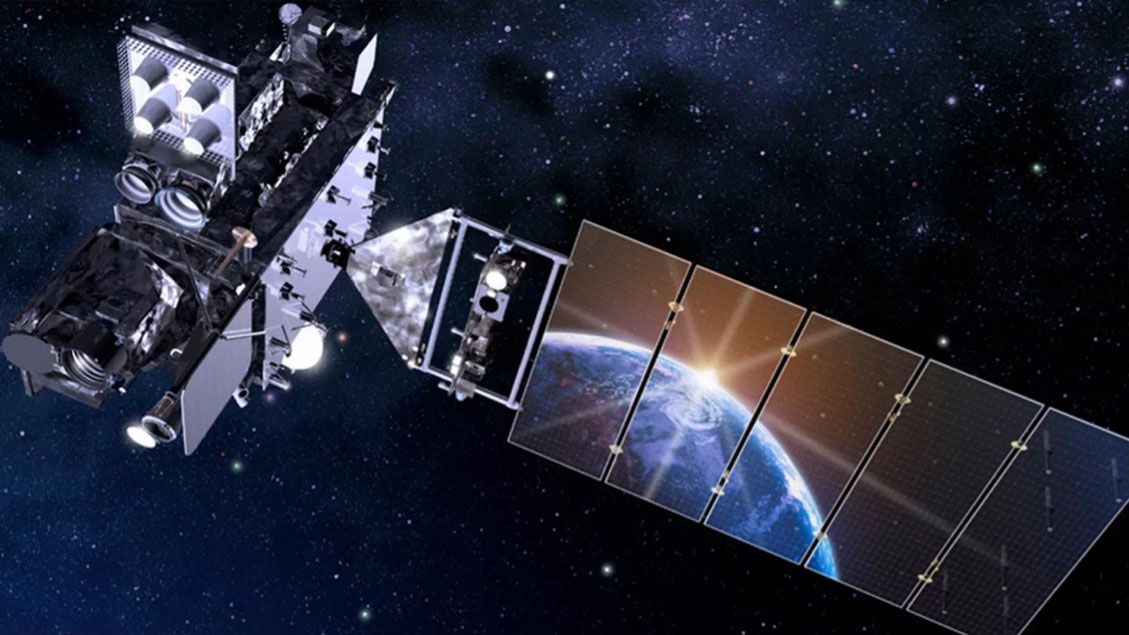
This is an artist’s illustration of a GOES-R Series satellite. These satellites monitor Earth’s weather as well as weather from the sun. Credit: NOAA
That is why the GOES-R (short for Geostationary Operational Environmental Satellite-R) satellite series has a Solar Ultraviolet Imager (SUVI) and other instruments to monitor the sun. These instruments continuously keep an eye on the sun and give space weather forecasters information that helps them to warn others of solar events that could harm satellites and systems on the ground.
Learn more about the latest satellite in the series, called GOES-U, here.




